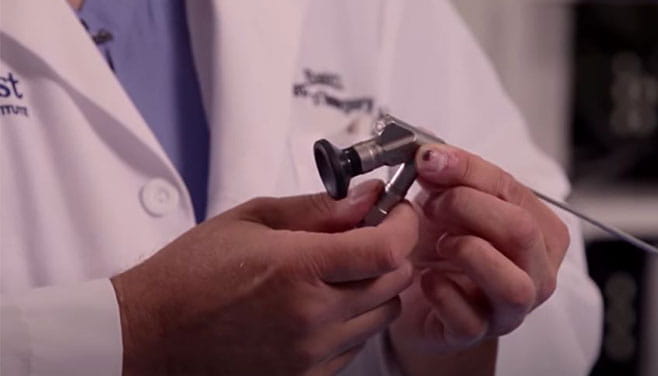Types of Pituitary Tumors
U.S. PATIENTS:713.441.8500
Find a Specialist Near You
Houston Methodist’s team of pituitary tumor specialists provide precise diagnostics, state-of-the-art treatment options and empathetic care for all types of pituitary gland tumors.
Physicians at the Kenneth R. Peak Center for Brain and Pituitary Tumor Treatment and Research provide comprehensive neurosurgical and oncological treatment plans. While pituitary tumors are rarely malignant, they can cause blindness or other life-threatening disorders if untreated.
Our neurosurgeons work across disciplines, seamlessly and collaboratively, so that every patient benefits from the full breadth of our expertise.
Types of Pituitary Tumors
Pituitary adenomas are benign (noncancerous) growths found in about 1% of the population. There are two general types of adenomas:
- Endocrine-active tumors, which secrete hormones and account for approximately half of all pituitary adenomas. Left untreated, endocrine-active tumors can lead to hormone-related conditions such as Cushing’s disease or gigantism.
- Endocrine-inactive tumors, which do not secrete hormones but may apply pressure to the brain and its surrounding structures.
Pituitary adenomas are classified based on their size and hormone production. Microadenomas are smaller than 1 cm (less than half an inch) in diameter, while macroadenomas are larger than 1 cm in diameter.
Pituitary adenomas can become cancerous, particularly if they are fast-growing. Pituitary carcinomas are extremely rare malignant pituitary adenomas. Pituitary carcinomas look like pituitary adenomas under a microscope. The only way to distinguish them is by monitoring when the tumor spreads to another part of the body.
Endocrine-active Pituitary Adenomas (Non-Cancerous Tumors)
Endocrine-inactive (Nonfunctional) Tumors
These pituitary adenomas do not produce hormones, though some secrete a defective hormone that has no endocrine effects. Because they do not alter hormone levels, they are often found during a brain scan for some other reason, or after they have grown large enough to exert pressure on surrounding tissues or structures, producing symptoms.
Symptoms of nonfunctional pituitary tumors include:
- Headaches that get progressively worse
- Increased pressure in the brain
- Loss in peripheral vision (the extreme left or right sides of what you see) or double vision
- Problems with memory, weakness or numbness if the tumors are very large and press on other areas of the brain
- Severe vision loss, including blindness
Other Types of Pituitary Tumors
Treatment Options for Pituitary Adenomas
Most pituitary tumors can be successfully treated. Virtually all tumors can be removed surgically or reduced in size with other means, and prognosis for patients is excellent. Our specialists at Houston Methodist offer many treatment options to remove or shrink pituitary tumors, making it possible to devise the best options to treat your pituitary adenoma:
- Minimally invasive surgery
- Standard surgical removal of the pituitary tumor
- Precisely focused image-guided minimally invasive radiation therapy
- Hormone therapy
Learn More About Pituitary Tumors
Patient Success
Removing Tumors Previously Out of Reach
We designed neurosurgical endoscopes 1/10 of an inch in diameter. Instead of a large incision, we place these endoscopes through tiny natural pathways to navigate through the nostrils and sinuses to the base of the brain. This allows us to remove tumors in areas that were previously inaccessible.



